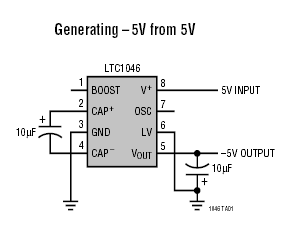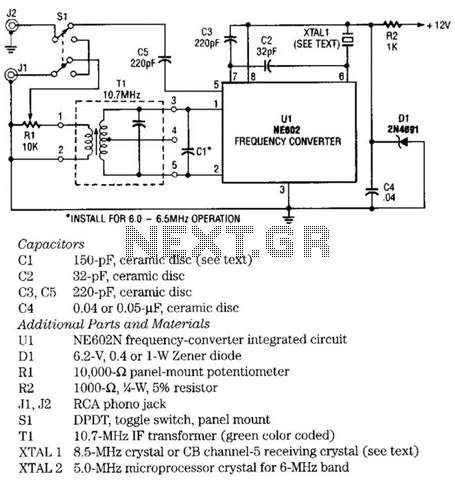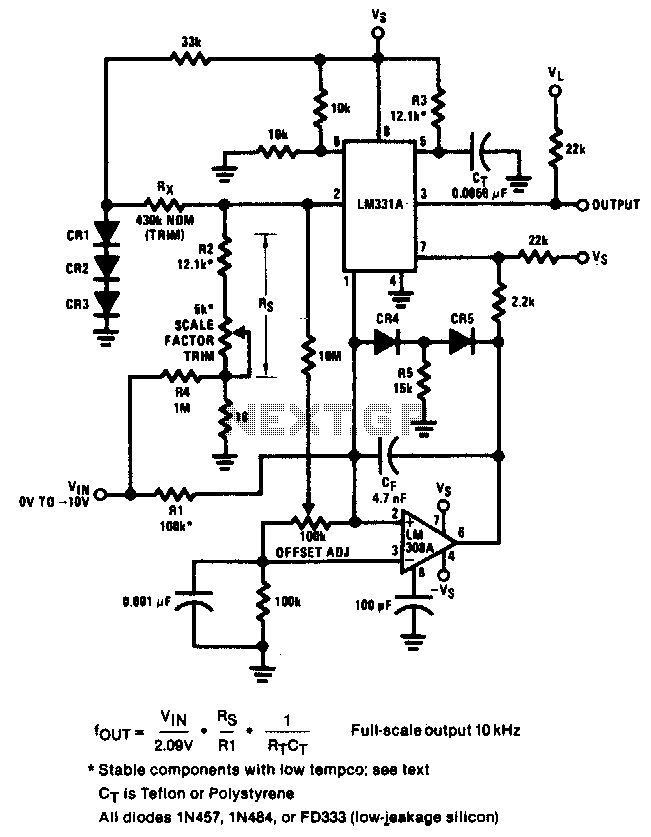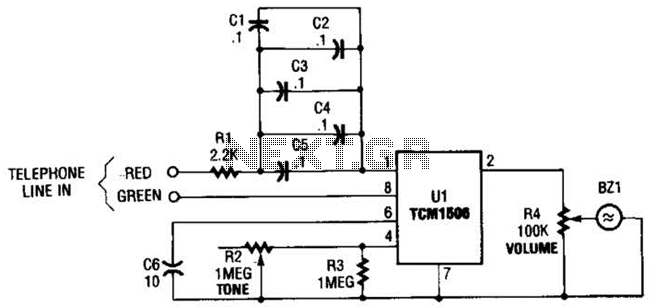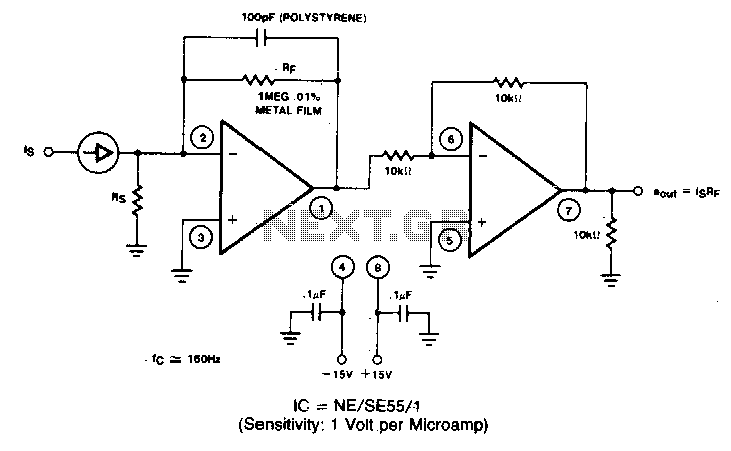
Sine-Wave/Square-Wave Converter

An operational amplifier (op amp) configured as a comparator generates a 10-V peak-to-peak square wave output with a 100-mV input signal at a frequency of up to 15 kHz. The resistor R5 can be adjusted to achieve symmetry in the square wave at lower input levels.
In this circuit, the operational amplifier is utilized in a comparator configuration, where it compares the input voltage against a reference voltage. The output of the op amp switches between its high and low states based on whether the input voltage exceeds the reference level. The specified output is a square wave with a peak-to-peak voltage of 10 volts, indicating that the op amp is capable of driving significant load conditions.
The circuit operates effectively at frequencies up to 15 kHz, making it suitable for various applications that require square wave generation, such as pulse width modulation or clock signal generation. The input voltage of 100 mV is relatively low, which necessitates careful design to ensure that the op amp can reliably switch states without distortion.
R5 plays a crucial role in the circuit by allowing for fine-tuning of the output waveform's symmetry. Adjusting this resistor will help balance the rise and fall times of the square wave, ensuring that the transitions between high and low states are consistent and that the output waveform maintains its desired characteristics at lower input levels.
Overall, this op amp comparator circuit is a versatile solution for generating square wave signals, with the added capability of symmetry adjustment to optimize performance across varying input conditions.An op amp used as a comparator produces a 10-V p-p square-wave output with 100-mV input, to 15 kHz. Adjust R5 for symmetry of square wave at low input levels 🔗 External reference
In this circuit, the operational amplifier is utilized in a comparator configuration, where it compares the input voltage against a reference voltage. The output of the op amp switches between its high and low states based on whether the input voltage exceeds the reference level. The specified output is a square wave with a peak-to-peak voltage of 10 volts, indicating that the op amp is capable of driving significant load conditions.
The circuit operates effectively at frequencies up to 15 kHz, making it suitable for various applications that require square wave generation, such as pulse width modulation or clock signal generation. The input voltage of 100 mV is relatively low, which necessitates careful design to ensure that the op amp can reliably switch states without distortion.
R5 plays a crucial role in the circuit by allowing for fine-tuning of the output waveform's symmetry. Adjusting this resistor will help balance the rise and fall times of the square wave, ensuring that the transitions between high and low states are consistent and that the output waveform maintains its desired characteristics at lower input levels.
Overall, this op amp comparator circuit is a versatile solution for generating square wave signals, with the added capability of symmetry adjustment to optimize performance across varying input conditions.An op amp used as a comparator produces a 10-V p-p square-wave output with 100-mV input, to 15 kHz. Adjust R5 for symmetry of square wave at low input levels 🔗 External reference

